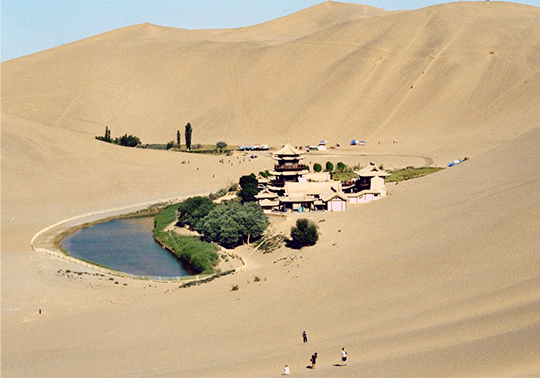An exhibition analyses the parallelism between the Spanish Romanesque and the ancient Buddhist art of the sanctuaries of Dunhuang
- February 24th, 2017

‘Cartography of the roads. Dunhuang and the Spanish Romanesque in the Iberian Peninsula’ is the title of an exhibition which opens today and that analyses the parallelisms between the Spanish Romanesque and the ancient Buddhist art of the Dunhuang sanctuaries. The exhibition will be open until 23 April in the Valencia History Museum. The Confucius Institute of the Universitat de València participates in the initiative.
The exhibition organized by the Confucius Institute of Madrid in collaboration with the Cervantes Institute of Pekin, the Confucius Institute Headquarters (Hanban) and the Dunhuang Research Academy. The organizer is Isabel Cervera (professor from Department of History and Theory of Art, UAM, and director of the Confucius Institute of Madrid).
Vicent Andreu, director of Confucius Institute of Universitat de València and Gloria Tello, Culture counsellor of the Valencian Council will attend the opening.
The exhibition, which was inaugurated in the Cervantes Institute of Pekin on 29 June 2016, has been shown in the Universitat Pompeu Fabra from Barcelona and it arrives now at the Valencian History Museum. ‘Cartography of the roads. Dunhuang and the Spanish Romanesque in the Iberian Peninsula’ aims at showing and analysing the parallelisms and similarities between the iconographies and the imagery of the Spanish Romanesque and the ancient Buddhist art from the sanctuaries of Dunhuang, based on the historical roots of its expansion.
The exhibition links the religious iconography from the monastic caves of Mogao (Dunhuang), one of the legendary stops of the Silk Road, between the centuries 4th and 14th, with the one that appeared in the Way of Saint James during the Romanesque period (11th and 13th centuries). The obvious differences in the territorial, chronological and cultural order become visual analogies in the exhibition. The Iberian Peninsula and Dunhuang have no direct contact in their creation and artistic identities formation processes.
File in: Institut Confuci













